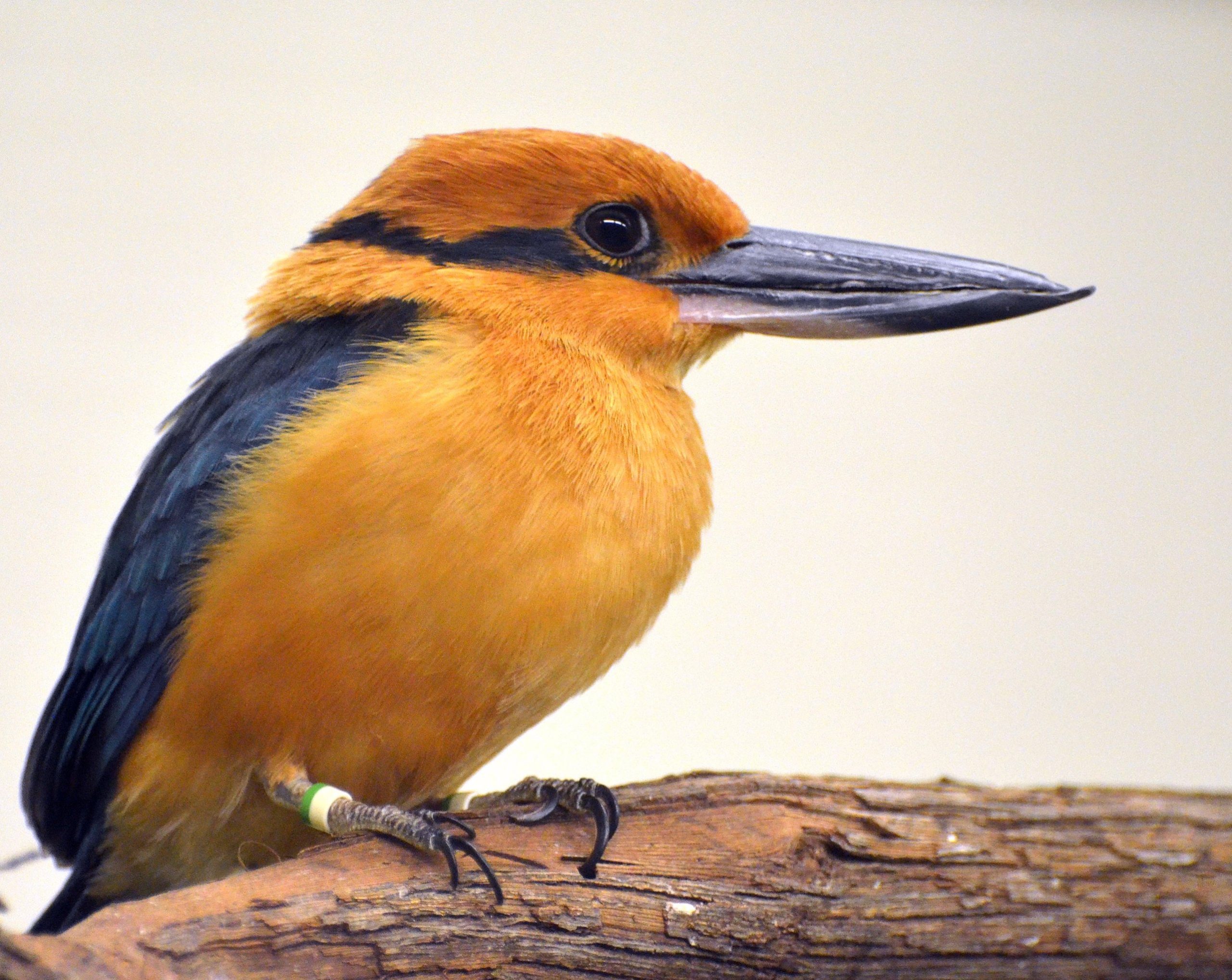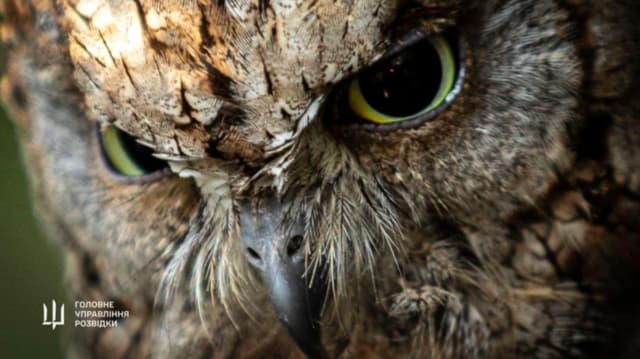
Culture
Man’s Best Friend, Except When It’s Time for the Weather
Working from home these days comes with a number of new challenges and risks that most never expected to deal with in their careers. But when the computer camera or conference video is placed in one’s private accommodations, all sorts of issues can pop up that folks normally don’t deal with in the office setting. Everything from what kind of photos, art or prints one has in the background to their furniture in a personal room to everything else the home is shared with becomes potentially exposed. And in the case of a particular weatherman trying to provide his meteorologist work online, man’s best friend can be a notable interruption.
Paul Dellegato regularly works as meteorologist for Fox 13 based in Florida. However, like many others, Paul had to figure out in short notice how to relocate his work and his broadcast to his home to maintain social distance and health safety. While the access to his work networks and computer setups wasn’t too hard, the readjustment to a home office and presentation place for his work took a bit of additional thinking. He had to pick a place in the house that would be free of distractions, walk-in surprises, problematic backgrounds, and not be invasive to his own home as well. What Paul didn’t count on was that his own extended family might end up being the real disruption to Paul’s broadcast.
In the clip provided, Paul is working as usual on his life TV broadcast and covering the weather for the day and the next few days’ expectation. As he’s going through the details and the changes in high and low pressures as well as the temperature predictions, someone doesn’t want to let the weatherman continue. Paul’s golden retriever, Brody, has decided to be a gate crasher and literally jump up in Paul’s face and personal space. No matter how much Paul tries, his dog just keeps being persistent for his master’s attention. Chances are the dog is probably hungry for dinner and is making a point about it. Doing so, however, Paul’s dog is not only making a presence on the screen, the canine is goofing up the weather graphics on the nearby computer, making a ton of noise, and showing how useless it is for Paul to try to and stop the chaos. The audience loves it and Brody, and Paul’s dog became the new digital mascot for Fox 13.
The weatherman’s crisis resonates with all of us. We’re all going through a big disruption, trying to reconstruct our professional work lives from home all over the country. So, to find a bit of humor in Paul’s online dilemma with Brody provides a cathartic effect, helping us all find some humor and a bit of lightness in watching. Once you watch the show clip, you’ll understand why Paul’s situation went viral so fast.
Things didn’t turn out bad for Paul. He earned big commendations for how patient he was able to stay under duress from Brody and the dog’s insistent interruptions of his weather show. And it was clear Paul loves his furry buddy. So, the feeling now is the heck with the weather maps. How Brody behaves on camera will indicate if tomorrow will be a good weather day or otherwise.
Culture
Guam Kingfisher Released into the Wild After 40 Years of Extinction

For the first time in nearly four decades, the Guam kingfisher, known locally as sihek, has returned to the wild. Six of these vibrant birds were released on September 23, marking a historic milestone in conservation efforts.
The sihek, which once flourished in Guam’s forests, had been declared extinct in the wild since 1986 due to the introduction of the invasive brown tree snake. This predator decimated the island’s bird population, including the sihek, by preying on their eggs. Fortunately, conservationists launched a captive breeding program, which kept the species from disappearing entirely.
The six birds were released on Palmyra Atoll, a predator-free island located about 3,700 miles east of Guam. This release is part of a long-term project aimed at establishing a breeding population on the atoll as a first step toward eventually reintroducing the sihek back to its native habitat in Guam.
The road to this moment began earlier in the year, with the hatching of the first sihek chick of the season at Sedgwick County Zoo in Kansas. Given that only 45 breeding females remain worldwide, each successful hatch is a critical victory for the species. Specialists from various institutions, including the Zoological Society of London and the Smithsonian’s National Zoo, worked tirelessly to care for the chicks and prepare them for life in the wild.
After being flown to Palmyra Atoll in late August, the birds spent time acclimating before their release. Each sihek is equipped with a small radio tracker to monitor their movement, habitat use, and eventual breeding behavior. Researchers will be closely watching the birds in the coming months as they adapt to their new environment and hopefully establish territories for breeding.
The return of the sihek to the wild has been the culmination of decades of collaborative effort between organizations like the U.S. Fish and Wildlife Service, Guam’s Division of Aquatic and Wildlife Resources, The Nature Conservancy, and several zoos. Their goal is to build a sustainable breeding population that can one day thrive in Guam’s forests once the brown tree snake threat is under control.
Although the release is a reason for optimism, conservationists remain cautious. With only a few dozen sihek left, the species faces significant risks, from disease to natural disasters. However, the successful reintroduction of extinct-in-the-wild species, such as the red wolf and California condor, proves that with dedication and proper resources, these efforts can succeed.
As Donal Smith, a researcher with the Zoological Society of London, pointed out, maintaining endangered species in captivity is no small feat. “Reintroduction programs like this require years of preparation and coordination. It’s essential that conservation efforts continue to receive the support they need to prevent more species from being lost.”
The sihek’s release offers a glimmer of hope in the face of ongoing environmental challenges. If all goes well, these birds will one day fly free in the forests of Guam once again.
Culture
From Conflict Zone to Conservation Triumph: Upemba National Park’s Remarkable Recovery

In the heart of the Democratic Republic of Congo (DRC), Upemba National Park is witnessing a remarkable transformation. Once dubbed the “triangle of death” due to rebel activity, this vast wilderness is slowly reclaiming its status as a thriving wildlife haven, thanks to the unwavering dedication of its rangers and conservationists.
The park’s tumultuous history began in 1998 when Bakata Katanga rebels sought refuge within its borders, leading to widespread poaching and devastation of wildlife populations. Elephants, lions, and zebras, once abundant, were pushed to the brink of local extinction. Even the park’s rangers, left unpaid during the Congo wars, resorted to poaching for survival.
However, recent years have seen a dramatic turnaround. Under the leadership of site manager Christine Lain, Upemba has secured crucial funding and revitalized its demoralized ranger force. The results are encouraging: elephant numbers have risen to about 210, while the zebra population – unique to this part of DRC – has rebounded from a mere 35 to an estimated 200.
Despite these successes, challenges persist. Poaching remains a threat, and the park faces potential disruption from nearby mining activities and oil exploration. To counter these pressures, park management is focusing on expanding the ranger force and conducting comprehensive biodiversity surveys to strengthen the case for Upemba’s protection.
The park’s recovery is not without human cost. Rangers like Sylvain Musimi continue to face danger from militant groups, with two rangers losing their lives this year alone. Yet, their commitment to Upemba’s restoration remains unshaken.
As Upemba National Park continues its journey from a conflict-ridden zone to a beacon of conservation, it stands as a testament to the resilience of nature and the dedication of those who protect it. The park’s story offers hope that even in the face of seemingly insurmountable challenges, conservation efforts can yield remarkable results.
Culture
From Warzone to Wildlife Haven: Ukrainian Intelligence Rescues Symbolic Owls

In a heartening tale of compassion amidst conflict, Ukraine’s Defence Intelligence (DIU) has facilitated the rescue and relocation of two owlets from the embattled Kharkiv region to Kyiv Zoo. This rescue operation, carried out on August 1, 2024, highlights the Ukrainian military’s commitment to preserving life in all its forms, even in the midst of war.
The young owls, now named Arei and Magura, were discovered by members of the 92nd Separate Assault Brigade during a mission near Lyptsi village. Found in dire conditions within a war-damaged structure, the birds were immediately taken into care by the soldiers.
Following their initial rescue, the owlets were brought to the attention of Kyrylo Budanov, Chief of DIU. Given the owl’s symbolic significance to Ukraine’s Defence Intelligence, Budanov made the decision to provide them a new home at Kyiv Zoo, where they will reside in a specially prepared aviary.
DIU representative Andrii Yusov emphasized that this rescue exemplifies the Ukrainian forces’ dedication to protecting not just human lives, but also those of animals caught in the crossfire. The decision to house the owls at Kyiv Zoo was motivated by a desire to share this positive story with the public, particularly allowing Ukrainian children to interact with these native birds.
Kyiv Zoo’s CEO, Kyrylo Trantin, expressed gratitude for the military’s efforts and assured that the zoo would provide comprehensive care for Arei and Magura, including rehabilitation and adaptation support. This rescue serves as a poignant reminder of the zoo’s ongoing efforts to safeguard animals during wartime.
This heartwarming incident stands as a testament to the Ukrainian people’s resilience and compassion, showcasing their ability to nurture life and hope even in the face of adversity.
Culture
Eco-Friendly Tourists in Copenhagen to Receive Free Food and Tours

Visitors to Copenhagen who participate in environmentally-friendly activities, like litter picking or using public transport, can earn free food, cultural experiences, and tours as part of a new pilot program.
The CopenPay trial, running from July 15 to August 11, turns eco-friendly actions into rewards, according to Visit Copenhagen, also known as Wonderful Copenhagen.
For instance, visitors who bring plastic waste to the National Gallery of Denmark can join a workshop to create art from the materials. Those who cycle or take public transport to the city’s famous heating plant can ski down the artificial slope on the building’s roof.
“CopenPay rewards actions like cycling, participating in cleanup efforts, or volunteering at urban farms with access to a variety of experiences in Copenhagen,” said Wonderful Copenhagen in a statement. “This includes free guided museum tours, kayak rentals, and even a vegetarian lunch made from local crops.”
Copenhagen is known for its beautiful architecture, excellent food, and clean, green environment. It’s also a great place for cycling, with 237 miles of bike lanes and 62% of citizens commuting by bicycle, according to the tourism board.
“With CopenPay, we’re helping people enjoy more of what Copenhagen has to offer while reducing their environmental impact,” said Mikkel Aarø Hansen, CEO of Wonderful Copenhagen. “It’s about creating enjoyable and environmentally responsible experiences.”
Tourists can earn rewards by showing a public transport ticket, but the system is mostly based on trust. An online map shows over 20 participating venues. If successful, the pilot project could become a year-round program.
This initiative comes at a time of growing concern over the environmental and social impacts of tourism, which have led to protests in Barcelona, the Canary Islands, and Mallorca.
“We need to change tourism from being an environmental burden to a force for positive change,” said Hansen. “An important step is changing how we move around, what we consume, and how we interact with locals.”
Culture
Longtime Friends Relive Woodstock After 55 Years with a Touch of Glamping

In 1969, Beverly “Cookie” Grant hitchhiked to the Woodstock music festival without a ticket and slept on straw. Ellen Shelburne arrived in a VW microbus and pitched a pup tent.
Now, 55 years later, the two longtime friends returned to the famous site in upstate New York, but this time in style. The women, now 76, enjoyed a luxurious two-bedroom glamping tent with comfy beds, a shower, a coffee maker, and Wi-Fi. Unlike their first visit, there was no mud from drenching rains, and they had pavilion seats to watch shows by Woodstock veterans John Fogerty and Roger Daltrey.
“We’re like hippie queens!” Grant joked over breakfast during the trip earlier this month.
The Bethel Woods Center for the Arts, which runs the site, treated Grant and Shelburne to this special stay to promote its new glamping facilities. They also explored Shelburne’s collection of photos from the original festival held August 15-18, 1969.
The once-trampled hillside by the main stage is now a manicured green space near a Woodstock and ’60s-themed museum and concert pavilion. However, the return visit still brought back a flood of memories. Shelburne retraced her steps from when she was a 21-year-old college student, guided by the photos taken by her then-boyfriend and future husband, David Shelburne.
“I’m looking at this person in the photograph, who is me, but a person just starting out in life at that age. And now I’m looking back at sort of bookends of my life,” Ellen Shelburne said. “All these decades later, I’m back at Woodstock and it just brings it all up in such a positive way.”
Grant and Shelburne did not know each other in August 1969 and attended the concert separately. Shelburne came from Columbus, Ohio, with David Shelburne, his best friend, and another woman. They arrived early, bought ponchos after rain was forecast, and she slept in a pup tent.
“I was never cold, wet, hungry, muddy, dirty, uncomfortable, or miserable,” she said. “It was the total opposite.”
Grant went to Woodstock on a whim. A long-haired surfer named Ray invited her and a friend to hitchhike to New York for the festival. Her friend dropped out along the way, but she and the surfer made it to Bethel. The last driver dropped them off at the edge of the epic traffic jam outside the festival and gave them a blanket. Grant walked the last several miles to Woodstock barefoot.
Both women were amazed by Jimi Hendrix, The Who, and other musical acts, but also by the good vibes from the 400,000 or more people who converged on Max Yasgur’s dairy farm.
“If we needed food, someone gave us food. Someone gave us water. We needed nothing,” Grant said.
The two women met months later in Columbus, where they each ran shops near Ohio State University with the men they went to Woodstock with. Both married their concert companions, though Grant got divorced several years later. David and Ellen Shelburne ran a film and video production company together until he died four years ago. Grant moved to Florida and became a chef on mega-yachts before starting her own business providing crews for those big boats.
Each woman kept a spark of the Woodstock spirit. Shelburne said she’s “stuck in the ’60s and proud of it.” They got the idea to return to the festival site last year after sharing oral histories in Columbus for the Museum at Bethel Woods.
This time, during their long weekend of peace, love, and nostalgia, they stayed in a “Luxury 2 Bedroom Safari Tent” with a front deck and bathroom. When it rained, they stayed dry in the museum.
On a sunny Saturday, Bethel Woods senior curator Neal Hitch drove the women around in a golf cart to explore the spots where David Shelburne took his festival photos. Unlike others who focused their cameras on the stage, he documented festivalgoers camping, swimming, selling goods, relaxing, and having fun. Hitch noted that David Shelburne’s images are valuable because they are in sequence, telling a story.
At one stop, Shelburne stood by a tree line, holding a photo of a field full of campers. She was standing where her late husband took the photograph, looking at the same field, minus the campers, 55 years later. Visibly moved, she said “oh” a few times and let out a deep breath before exclaiming, “Wow!”
It broke her heart that her husband is not in the photographs, but she felt his presence that weekend.
The women explored the festival site over several days, from the stage area to the woods where vendors had set up stalls. Despite the changes—the luxury tents, the fences, the museum—they recognized the same mellow, friendly vibes they experienced as 21-year-olds. And they were thrilled to immerse themselves in it again decades later.
“It’s very wonderful to see that it’s in history forever,” Grant said, “and we’re a part of that.”
-

 OMG6 years ago
OMG6 years agoA Couple Gave Birth to the Most Beautiful Twins Ever
-

 OMG7 years ago
OMG7 years ago20 Rare Historical Photos
-

 OMG6 years ago
OMG6 years agoHilarious Airport Photos
-

 Cute6 years ago
Cute6 years agoMom Refuses to Let Daughter Eat Sugar and Years Later This is What She Grows Into
-

 OMG6 years ago
OMG6 years agoTop Secret Air Force One Facts That You Never Knew
-
OMG6 years ago
The Funniest Yearbook Photos Of All Time
-

 OMG6 years ago
OMG6 years agoRetired Mathematician Restores Log Cabin
-

 OMG5 years ago
OMG5 years agoWhat Happened When This ‘Duck Dynasty’ Legend Chopped Off His Beard?